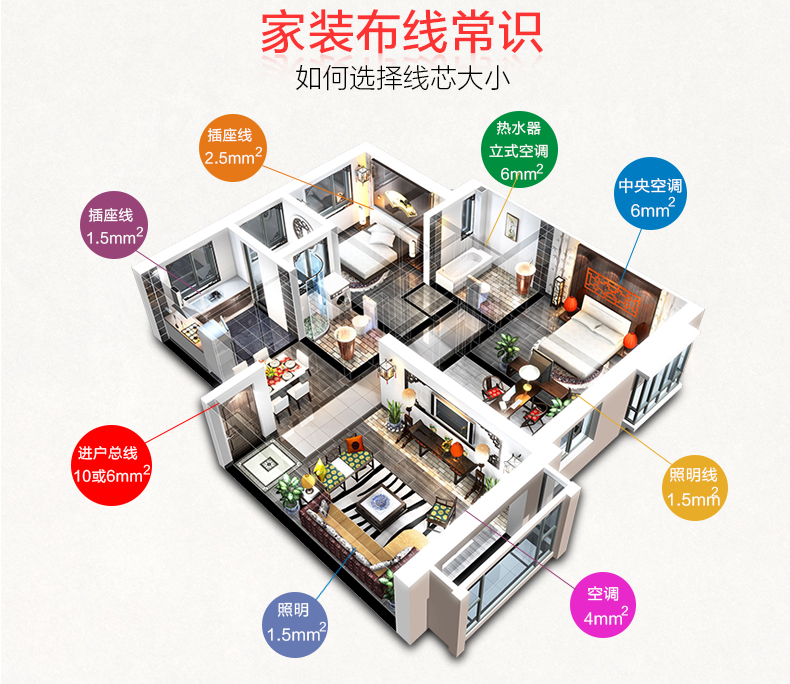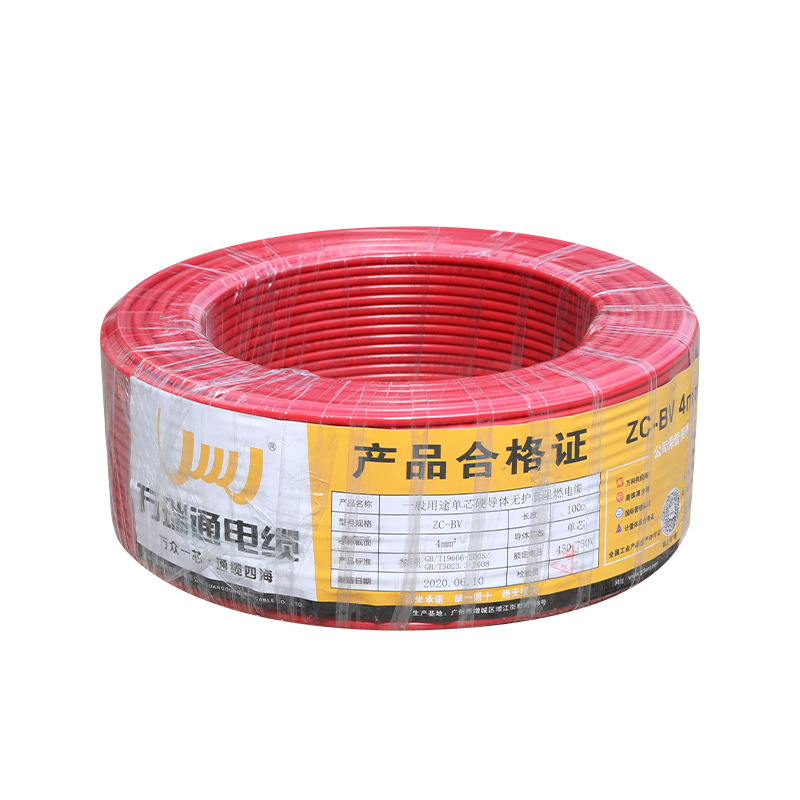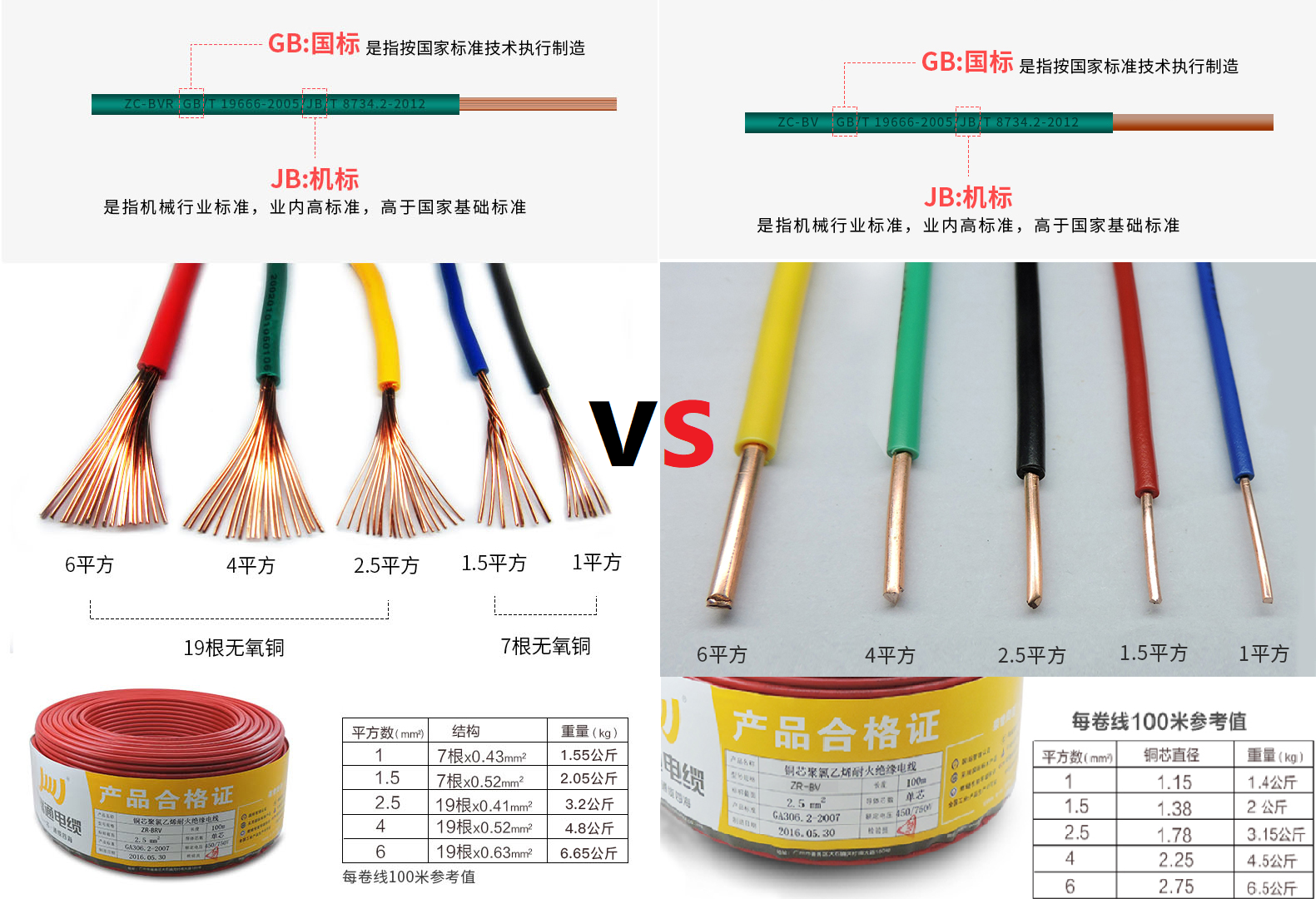Now is the peak season for house decoration, and the issue of home decoration wires is a topic that we must pay attention to. Home decoration wires are directly related to your electrical safety, convenience, and stability for the next few decades. There are numerous wire brands in the market with varying quality, making it easy for ordinary consumers to fall into the trap. The following guide combines industry standards and practical experience to teach you how to identify and purchase high-quality home decoration wires like a professional electrician:
Core principles: Safety first, applicability as the priority, quality as the foundation
Step 1: Clarify needs - plan before purchasing
1. Draw a circuit diagram (or clarify the electrical points):
Determine how many sockets, switches, and lighting points are needed for each room.
Clearly identify the location of high-power electrical appliances: air conditioners (cabinet machines, hanging machines), electric water heaters, ovens, induction cookers, instant water faucets, etc. These are the key points!

2. Determine the circuit division:
Basic principles: lighting circuit, ordinary socket circuit, kitchen socket circuit, bathroom socket circuit, independent circuit for each air conditioner, independent circuit for special high-power appliances (such as instant water heaters).
Wanruitong Cable Engineer Experience: Reasonable circuit division is the foundation of safety. Prevent a circuit from tripping or even overheating due to excessive load. The kitchen and bathroom must have independent circuits due to the humid environment and numerous electrical appliances. The air conditioning has high power and must be dedicated to a dedicated line.
3. Calculate the line diameter (square number): This is the most crucial step!
Lighting circuit: Typically, a 1.5 square millimeter (mm ²) BV/BVR cable is sufficient.
Ordinary socket circuit: It is recommended to use 2.5 mm ² BV/BVR wires.
Kitchen socket circuit: Due to the large number of appliances and the possibility of simultaneous use (such as microwave ovens, rice cookers, kettles, etc.), it is strongly recommended to use a 4 mm ² BV/BVR cable. If the electrical power is particularly high or there are a large number of appliances, 6mm ² can be considered.

Toilet socket circuit: For electric water heaters and bathroom heaters with high power and humid environments, 4 mm ² BV/BVR wires must be used. If using an instant electric water heater, it may require 6 mm ² or even 10 mm ² (depending on the power, be sure to consult a professional).
Hanging air conditioner (1-1.5 horsepower): independent circuit, using a 2.5 mm ² wire is usually sufficient (but it is recommended to reserve space or refer to the manual).
Cabinet air conditioning (2 horsepower and above): independent circuit, must use 4 mm ² wire.
Central air conditioning/high-power instant water heater: independent circuit, usually requiring 6 mm ² or 10 mm ² lines, calculated based on equipment power and line length.
Entry line: Based on the total electricity load of the household, modern households usually require 10 mm ² or 16 mm ², while old residential areas may require 6mm ² for renovation or small apartments (subject to professional calculation and confirmation).
Wanruitong Cable Engineer Experience Formula (estimation, non precise calculation): "Better big than small". Choosing a larger wire diameter will result in limited cost increase, but there will be significant improvements in safety, future scalability (which may increase electrical appliances), and line losses (resulting in less heat generation). Especially for the kitchen, bathroom, and air conditioning dedicated lines, don't be stingy with that bit of money.

4. Determine the type of wire:
Hard wire (BV PVC insulated copper core wiring): single stranded solid copper wire. High hardness, not easy to oxidize, good conductivity, relatively difficult to pass through pipes (requiring standardized construction), and usually priced slightly lower than BVR. Mainstream recommendation for home decoration wires.
Flexible Wiring (BVR - Polyvinyl Chloride Insulated Copper Core Flexible Wiring): Multiple strands of fine copper wire twisted together. Soft and easy to bend, convenient to pass through pipes, effortless construction, and good fatigue resistance. Crimping or tinning treatment is required at the terminal block (very important! Otherwise, it is easy to cause false connection and sparking). The price is usually slightly higher than BV.
Experience of Wanruitong Cable Engineer: For fixed installation of concealed wires in home decoration, BV wire is a better choice, with better reliability and long-term stability. BVR is more suitable for situations that require frequent movement or bending, such as internal equipment wiring and temporary circuits. If BVR is chosen, it is necessary to supervise the electrician to handle the multi strand wire in a standardized manner (such as pressing wire caps or soldering), as this is a high-risk area for accidents!
Wanruitong Cable Engineer reminds you that there are second and third steps to scientifically identify qualified home decoration wires. Please search on Baidu for more information.
+86 136-3137-9141
email:
wanruitong8@gmail.com




